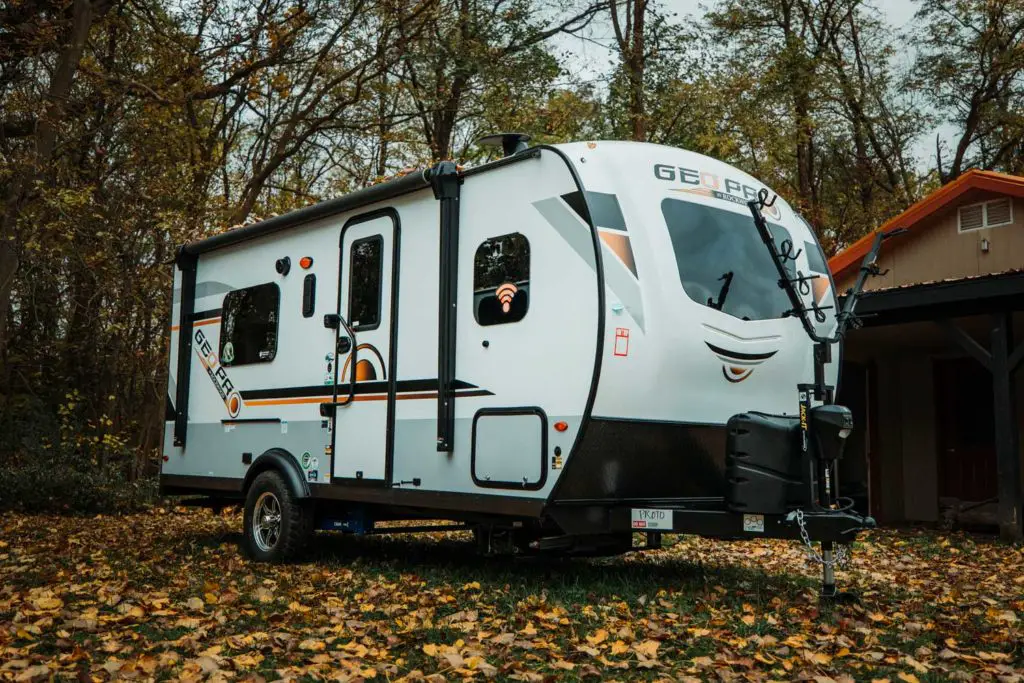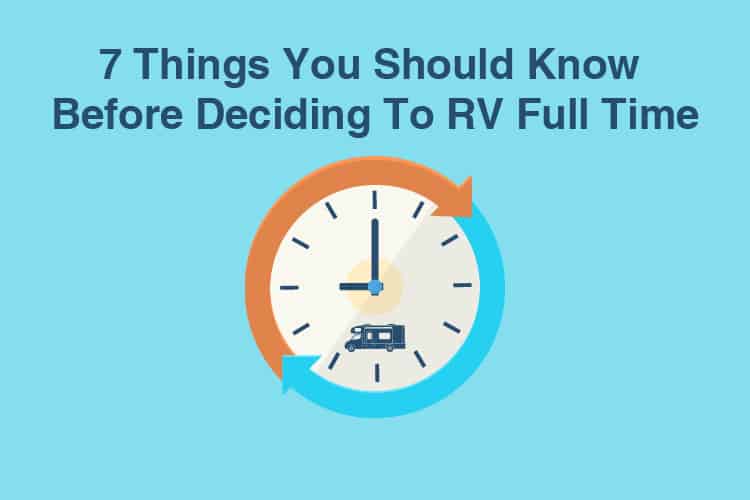Before you buy a car, you want to be sure of the quality you’re purchasing. This is true for any vehicle, as we all need to feel safe on the road. By understanding a vehicle’s history, you can see where problems may arise in the future.
The VIN, or Vehicle Identification Number, is the key to discovering these details. This code can unlock the history of a car, so you can feel safe on the road. But can you do this with a travel trailer?

As with all road vehicles, a travel trailer should have a VIN. The number will be located somewhere on the RV, and can be searched on a database. By doing this, you find a simple history before you purchase
It’s important to understand what a VIN is, where to find it, and what information it will provide. Below are the basics of VINs, so you can travel safely.
What is a VIN?
A VIN is a Vehicle Identification Number, a unique code that refers to your vehicle. It can be searched on a database to show a basic history of repairs and safety issues. Any vehicle that is legal to drive should have a VIN.
VINs were first introduced in America in 1954, although they didn’t become standardized until 1981. At this point, the National Highway Traffic Safety Administration of the United States (or NHTSA), created the 17 character code that’s still in use today.
This code is created using a mixture of numbers and letters referring to manufacturing details of the vehicle. The format is standard across all types of road safe vehicles, from motorbikes to RVs.
There are several parts to the VIN, each of which is set regarding specific information relating to the production of the vehicle. These parts are:
- Character 1, 2, and 3: the WMI. The World Manufacturer Identifier, WMI, makes up the first three characters of the VIN. The first character refers to where the vehicle was built, and the second and third show the region and manufacturer.
- Characters 4, 5, 6, 7, and 8: the VDS. The Vehicle Description Section follows, and contains important information about the type of vehicle itself. The model, vehicle, and Gross Vehicle Weight Rating (GVWR) are all covered. The characters used and the placement are all decided by the manufacturer.
- Character 9: CD. The Check Digit shows the VIN has been validated and authorized.
- Characters 10 – 17: VIS. Every VIN ends with the Vehicle Identification Section. Character 10 shows the model year of the car, and character 11 refers to the plant where the vehicle was assembled. The remaining six characters are the serial number of the vehicle.
There are three characters that are never used in a VIN, and these are O, I, and Q (o, i, and q). The reason for this is that they’re too easily confused with numerical values. So if you’re trying to search for a VIN, and it isn’t working, check you aren’t using any of those letters.
Is the serial number the VIN?
The serial number and the VIN aren’t interchangeable, but the serial number is a vital part of the VIN.
Serial numbers are less unique than VINs because they’re shorter. Only six characters are used in a serial number. When you add on the other parts of the VIN, the room for variety increases. There are a lot of cars (and motorbikes, RVs, and mopeds, etc.) on the road. The long VIN avoids any vehicle being confused for another.
How do I find my travel trailers VIN?
There is no standard location for the VIN, so you may need to search all over your RV to find it. The best place to start is the metal trailer tongue. The VIN may be a sticker, or it could be engraved. Either way, it’s always a 17 character code.
Because VINs are used on so many vehicles, there isn’t a standardized placement. This can make finding them a bit of a nightmare, especially on something as large as an RV. If you have access to the travel trailers title, then the VIN should be listed there. If you don’t, this can generally be accessed via the DMV. However, you may still want to find the VIN on the vehicle itself, to be sure they match.
Before you start looking, park your trailer on a flat surface and secure it in place. You need to have access to every side of the RV, so avoid parking close to a wall. Also, grab yourself a flashlight, a pencil, and some paper.
The first place to look is on the metal trailer tongue. There are often information stickers placed across here, so you’re likely to find the VIN. Search thoroughly, to be sure you aren’t missing it.
If it isn’t located on the metal tongue, hitch, or weight distribution bars, check the door frames. The backs of doors and the surrounding areas are another common place to find stickers with information. The interior is a likely place to find the VIN, so give it a good look over. Start with the left instrument panel, and the steering column.
If you can’t find it inside, then start looking on the outside. It’s slightly less common to find a VIN on the exterior, because it’s more liable to damage. However, they do still regularly turn up there. Check over the frame, including any storage compartments or even vents.
The next step is to search the component parts. Occasionally the VIN can be found on the engine, or the machine pad on the front of the engine.
Finally, if it still can’t be located, it’s time to go under the trailer. It’s unlikely that the VIN will be here, but it does still happen. Take your flashlight and check all the nooks and crannies.
With any luck, it’ll be in the first place you look. If it isn’t, don’t get disheartened. It’s bound to turn up somewhere. Check through any documents you were given with the travel trailer, to see if the VIN is listed.
Once you’ve found your VIN, make a note of the number. Be sure to write it clearly and legibly. Remember that any letters will be capitalized, and there won’t be an i, an o, or a q. Now is also a good time to make a note of where you found it, in case you need to look again.
What to do if I have two VINs?
On your thorough search of the vehicle, you may have discovered that the RV has two VINs. This is fairly common. The reason is that RVs will often be built on a chassis from a different manufacturer.
The final RV will be constructed with the chassis, and assigned a VIN. However, the original manufacturer will sometimes assign a VIN to the incomplete chassis, giving the vehicle two VINs.
When it comes to registering or titling the RV, the finished VIN should be used. This will likely be located on the interior of the RV, where the incomplete VIN will be on the base frame. The finished VIN will contain all the accurate information.
Where to get a report from a travel trailers VIN?
Having located the VIN, and determined which is the correct one, you want to use it to get a report on the vehicle’s history. There are a few ways to go about this, but the best place to start is contacting the DMV.
All VINs are stored in a database. Any inquiring parties then have access to a history of the vehicle, including any damage, defects, or even thefts.
The DMV
The DMV is the best place to go in order to get a report on a travel trailer from the VIN. They should have access to comprehensive records regarding the purchase and damage to a vehicle. Either talk to them in person, or request a record over the phone. You may be required to pay a fee, and they may ask for personal identification. This isn’t standardized across states, but it’s better to be prepared.
Depending on the state, you may be able to access the records online. This would likely incur a small fee.
The dealership
This may take a little longer, but the VIN records can often be found by a dealership. It’s important to look for a dealership that either specializes in the manufacturer that made your trailer, or have links to the manufacturer. Otherwise, they won’t be able to help.
They may not be able to provide the same report and information as the DMV, but a dealership can still help with information. If nothing else, they should be able to point you in a better direction.
Online
Unsurprisingly, there are places online that provide access to a database of VINs. However, these aren’t as good an option as trying the DMV. Online databases may not have access to the specific information for your travel trailer, as there are such a vast amount of VINs out there.
As well, some online databases will only decode your VIN. This means it can tell you what the individual characters of the VIN refer to. While this can be useful information, it doesn’t give a full picture of the vehicle’s history. Looking online is a good starting point, but it’s better to contact the DMV or a dealership.

What can I expect to find in a VIN report?
It’s incredibly important to check a vehicle’s history before purchase, so you can be sure you’re buying something of quality.
There are a few things details you can expect to find in a report from the RVs VIN:
Previous owners: How many people have owned the RV, and what it has been used for. This is slightly less relevant for a travel trailer, as they’re unlikely to have been registered as a taxi, but this can still provide some useful information. For example, if the trailer was ever used as a rental.
Accidents: If your car has ever been involved in an accident, big or small, this will show on the history report. Trailers are big items, so they’re likely to get a few small dings in their life that shouldn’t cause much worry. However, if a travel trailer was involved in a serious collision, a new owner should know. This can determine how safe to drive the RV is. Keep an eye out for any records of frame damage.
Repairs and services: The services give you an idea of how well maintained a vehicle was, and the kind of problems to anticipate in the future.
Recalls: Any recalls on a vehicle should have been addressed by a previous owner. However, a VIN check will show what these were, and if the owner neglected to sort it. This will also show if there were any recalls on the airbags. These items can be defective, and need to be recalled and replaced. If a recall is necessary, the dealership should do it for free.
Titles and salvage: The title history of the vehicle should show in the report, including if the trailer has a salvage title. A salvage title indicates that at one point the RV was considered a total loss, and it has since been salvaged and repaired. In some states, salvaged vehicles are illegal to drive. Even if they are legal, it can indicate more issues down the line.
The title will also reveal if the vehicle has been stolen.
These reports will also show if there is a lien on the vehicle. This is when the current owner still owes money for the travel trailer. In these cases, the trailer can be repossessed if the payment is never made, and the seller may not have permission to sell.
Odometer: The VIN will show the most recent odometer reading of the trailer. Always double check that it’s accurate to the reading on the RVs odometer. If the VIN reading is higher, it means the owner has likely rolled the odometer back. This is a bad sign.
I have a vintage travel trailer – how do I get a VIN?
An older travel trailer may not have a VIN, or it may be that over the years the VIN has worn away — especially if it was on a sticker.
If you’re looking to buy a vintage trailer, ask about the VIN. If it can’t be provided, it’s the duty of the seller to apply for a new one. You shouldn’t buy a trailer without a VIN.
If you have a travel trailer without a VIN, it’s your responsibility to get a new one. The first step is to contact the DMV. The process to apply for a new VIN varies from state to state, but contacting the DMV is always the best thing to do. They can tell you how to start the process, and what will be required.
While the application varies, it’s standard to expect to provide proof of ownership. It’s also likely that checks will be carried out on the vehicle itself, to inspect the condition of the trailer.
Can I find out the year of my travel trailer?
Yes, it’s relatively simple to check the year of a travel trailer. The year your trailer was manufactured is indicated by the tenth character in the VIN sequence. If you have the VIN, you can identify the year.
Each year is assigned a number or letter to be used for the VIN. These numbers are standardized, so all RVs made in the same year should have the same digit. This year encoding was only made standard in 1980. If your RV is older than that, then you need to look elsewhere to find the year.
As there are a limited number of letters and numbers available for a single digit code, they do repeat. A travel trailer manufactured in 1982 has the same “C” code as one made in 2012. While this may cause some confusion, it should be fairly easy to determine which year it refers to by looking at the car.
The year encoding can be found here.
Keeping accurate records of your travel trailer for the future
Should you ever wish to sell your travel trailer, you need to provide the buyer with accurate information. This can help you fetch a higher price, and create a bond of trust between you and the buyer.
Even if you don’t ever see yourself selling, keeping accurate records is good for your own peace of mind. We can never be entirely sure of what life may throw at us.
First, keep all the relevant documents you receive when purchasing the trailer. If you’re buying second-hand, this should include a history report. Most importantly, keep the bill of sale. You need to maintain proof that the RV is yours. Filing all these documents together is easy to do, and can save you from so much hassle in the long run.
Report accidents to the police, and keep a record. Presumably, any major accidents would be reported to the police anyway. Smaller collisions should also be reported, even if it only results in minor damage, and you have no interest in pursuing charges. This simply creates an accurate report of what happened, and can be referred back to if any problems arise.
Record any damage that the vehicle may receive. Whether this flooding, fires, or structural damage. Generally these will be recorded when you inform your insurers.
Any upgrades or maintenance should also be documented. As these won’t be recorded with an insurer, it’s your responsibility. Even if you get a cleaner in, keep proof to show the vehicle has been well maintained.
Sales, loans, and thefts must be recorded. If your trailer is stolen, it should be immediately reported to the police. Similarly, if the trailer has been broken into. If you take out a loan against the trailer, document this correctly as well.
Should you choose to sell, always go through the proper channels. File your bill of sale, so it can be produced if necessary. Once a sale has been finalized, double check with the buyer to ensure they register the RV in their name.
Final thoughts
Before purchasing an RV, you should always check the VIN to find a record of the vehicle’s history. This code is incredibly important, and holds huge amounts of information.
Once you’ve purchased an RV, it’s down to you to keep a track of its usage. That way, when a future sale arises you can get a decent price and a happy buyer!





